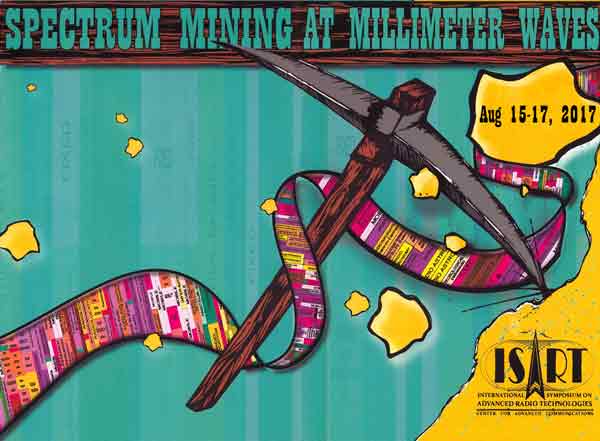Annual Spectrum Symposium Will Examine Millimeter Waves

Spectrum capacity discussions have often focused on the lower frequency bands (below about 6 GHz) because those signals are able to travel significant distances without being interrupted by environmental factors. But these lower frequency bands do have a drawback for wireless transmission in a data-hungry age – available bandwidth is limited.
Until recently, higher frequencies were not considered useful for outdoor transmissions, since their signals are susceptible to propagation loss in bad weather and can’t travel through buildings. However, advances in technology are beginning to unlock their potential.
Higher radio frequencies, from roughly 20 to 300 GHz, are considered promising spectrum for the next generation of wireless technologies, including 5G. Attention is particularly concentrated on the millimeter wave (mmWave) or Extremely High Frequency (EHF) bands, 30–300 GHz. The bandwidth available in the millimeter wave frequency range could increase the speed of cellular Internet service by more than ten times.
This year’s International Symposium on Advanced Radio Technologies (ISART) will explore millimeter waves, the technical challenges they present, and applications for which they are best suited. The conference, to be held August 15 to 17 in Broomfield, Colorado, is again co-sponsored by NTIA's Institute for Telecommunication Sciences (ITS) and the National Institute of Standards and Technology (NIST) Communications Technology Laboratory.
ISART, now in its 16th year, brings together the world's experts on advanced radio systems development. The theme of ISART 2017 is Spectrum Mining at Millimeter Waves. A tutorial and four panels will approach this topic from five different perspectives: regulation, high-speed data links and backhaul, standards, measurement and modeling, and systems. The conference will feature presentations on spectrum policy and technology from senior Administration representatives and a keynote address by Tom Power, Senior Vice President and General Counsel at CTIA, as well as student poster sessions, industry exhibits, and demonstrations.
Other spectrum-related events will be held on August 15, prior to the tutorial, at this year’s venue, the Renaissance Boulder Flatiron Hotel in Broomfield, Colorado. These include meetings of the Commerce Spectrum Management Advisory Committee (CSMAC) and the Wireless Spectrum Research and Development (WSRD).
For more information, visit the ISART website. Registration closes August 8; on-site registration will be available at the venue. To take advantage of conference room rates, hotel reservations must be made before July 24.
